Heat network projects: quarterly report - January 2025
Information on the capital and pre-capital projects which have been funded through Scotland's Heat Network Fund, Low Carbon Infrastructure Transition Programme, Social Housing Net Zero Heat Fund and the Heat Network Support Unit.
Heat Network Capital Projects
Ashgill Road Low Carbon Heat Project
Lead Organisation:
Lowther Homes Ltd
Project Stage:
Capital - Construction
Technology type(s):
Shared ground loop array heating system with ground source heat pumps
Location:
Milton, Glasgow
Type of Support:
£388,074 SHNF Grant
Completion date:
Predicted commissioning April 2025
Project description:
Lowther Homes Ltd (part of Wheatley Group) have been awarded £388,074 worth of funding to install a shared ground loop heat pump system at Ashgill Road, Milton, Glasgow. The project will provide low carbon heating and hot water to a 48-unit new build affordable housing development.
The project began on site in October 2023 and will complete in April 2025.
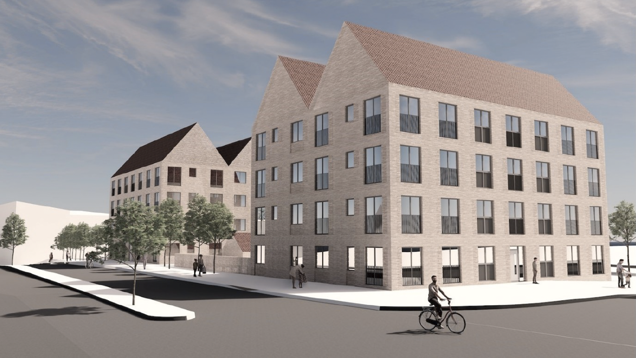
Brandon St, Motherwell – Commissioning of a communal heating system for 48 new building social housing units
Lead organisation:
North Lanarkshire Council
Project Stage:
Capital - Construction
Technology type(s):
Shared ground loop array heating system with ground source heat pumps
Location:
Motherwell, North Lanarkshire
Type of Support:
£415,432 SHNF Grant
Completion date:
Predicted commissioning early 2025
Project description:
North Lanarkshire Council will install a zero direct emissions communal heating system consisting of a shared ground array and heat pumps which will supply heat for 48 social rented flats in Motherwell. The low emissions heat system will provide carbon savings for tenants, reducing their energy bills and contributing to fuel poverty and net zero targets.
The project began construction in March 2023 and is due to commission in January 2025.
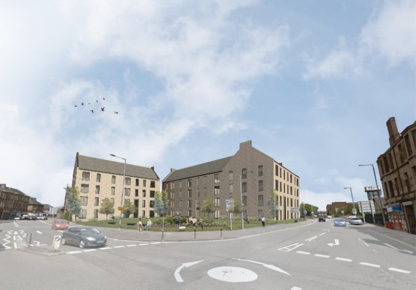
Torry Heat Network – Phase 2
Lead organisation:
Aberdeen City Council
Project Stage:
Capital - Construction
Technology type(s):
Expansion of Torry Heat Network using waste heat from Energy from Waste Plant
Location:
Torry, Aberdeen
Type of Support:
£8,971,492 SHNF Grant
Completion date:
Predicted commissioning March 2026
Project description:
This project expands the Torry Heat Network Phase 1 which was part funded by the Scottish Government's Low Carbon Infrastructure Transition Programme. The heat network distributes heat from a Heat Distribution Facility at Tullos Recycling Centre and a heat offtake at the new Energy from Waste plant at Tullos. Phase 2 will see the connection of a community hub to the network, and enable connections to a further 587 homes. As part of the project, there will be a wider engagement strategy to encourage wider uptake.
The second phase is due to commission in March 2026.
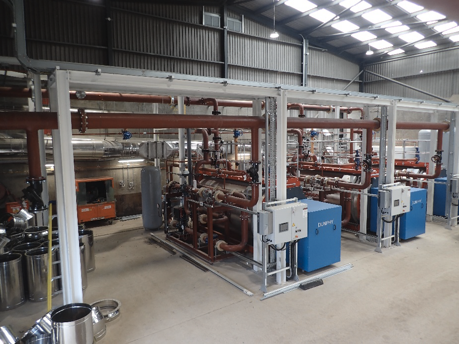
Aberdeen City Council Housing Project - Kaimhill
Lead organisation:
Aberdeen City Council
Project Stage:
Capital - Construction
Technology type(s):
Installation of a ground loop shared array with heat pumps
Location:
Garthdee, Aberdeen
Type of Support:
£306,525 SHNF Grant
Completion date:
Commissioned August 2024
Project description:
The project will install a zero direct emissions heat network consisting of a shared ground array with heat pumps to provide affordable heat to 35 new homes at the Kaimhill development site in Garthdee, Aberdeen. The 35 homes will be comprised of a mix of 3 or 4 bedroom terraced houses and bungalows and are part of Aberdeen City Council's social housing stock.

LCITP Capital Projects
AMIDS District Heating Network
Project Organisation:
Renfrewshire Council
Technology type(s):
Treated water converted into ambient heat directed through underground network and upgraded using heat pumps.
Location:
Paisley, Renfrewshire
Grant value:
£3,136,968
Completion date:
March 2023
Project description:
Renfrewshire Council has developed a state-of-the-art, low carbon heating network at the Advanced Manufacturing Innovation District Scotland (AMIDS) including the National Manufacturing Institute Scotland (NMIS) and the Medicines Manufacturing Innovation Centre. The first of its kind in Scotland, the fifth-generation renewable energy network works by directing treated water into a new energy centre, where low temperature heat is extracted and channelled through a 3.7km underground pipe loop. Heat pumps at each building upgrade this heat to suitable levels for heating and hot water. The network provides a cost-effective route to low carbon heating, an attractive proposition for major manufacturers locating at AMIDS and is future-proofed to supply further developments nearby.
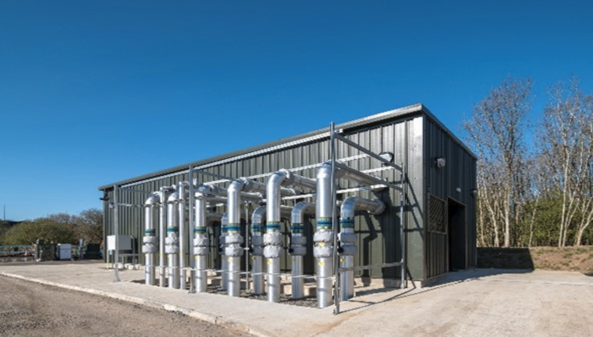
Abbey Ecosse
Project Organisation:
Abbey Ecosse
Technology type(s):
Energy system comprising an anaerobic digestion plant, biogas engine, peak demand biogas boiler, EV chargers, electrical storage and grid export.
Location:
Forss Energy and Business Park, Thurso
Grant value:
£1,111,975 LCITP Grant
Completion date:
Summer 2024
Project description:
The Project will install and commission an integrated low carbon energy network, which comprises of a combination of an anaerobic digestion (AD) plant providing heat and power to the site; biogas gas engine; peak demand biogas boiler; electrical storage and grid export. The Old Poultney Distillery will provide by-products to the AD plant for the generation of biogas. EV charging points will be used by commuters between Thurso and establishments such as Dounreay Nuclear Facility as well as by tourists utilising the North Coast 500 route.
It is estimated that the project will achieve carbon savings of 130,612 kgCO2e pa, representing an 86% reduction relative to business as usual.
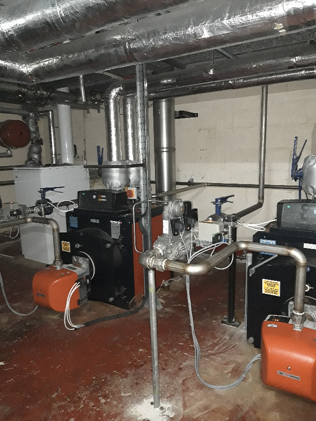
Torry Heat Network, Phase 1
Project Organisation:
Aberdeen City Council
Technology type(s):
Heat network, Energy from Waste (EfW)
Location:
Torry, Aberdeen
Grant value:
£5,787,235 LCITP Grant
Completion date:
December 2023
Project description:
The project developed a new district heating network, distributing heat from a Heat Distribution Facility at Tullos Recycling Centre and a heat offtake at the new Energy from Waste plant at Tullos. The project links to the existing HeatNet district heat network to provide additional connections to domestic, local authority and third sector customers.
LCITP funding was granted for the construction of the new district heating network infrastructure, and the construction of the undertrack rail crossing, enabling district heat network pipework to be routed between Greenwell Road and Tullos Primary School.
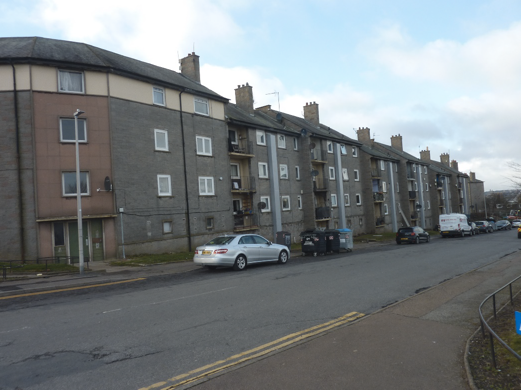
Zero Carbon Affordable Homes
Project Organisation:
LAR Housing Trust
Technology type(s):
Shared-ground loop heat pumps and thermal storage
Location:
Fountainbridge, Edinburgh
Grant value:
£128,283 LCITP Grant
Completion date:
April 2024
Project description:
The project will install a shared group loop array heating system with ground source heat pumps and high efficiency heat batteries to serve 14 properties (10 affordable flats and 4 houses) in Fountainbridge, Edinburgh. The 10 flats included in the project will then be made available for mid-market rent. The project is predicted to produce carbon savings of 47,560 kgCO2e when compared to business-as-usual scenarios.
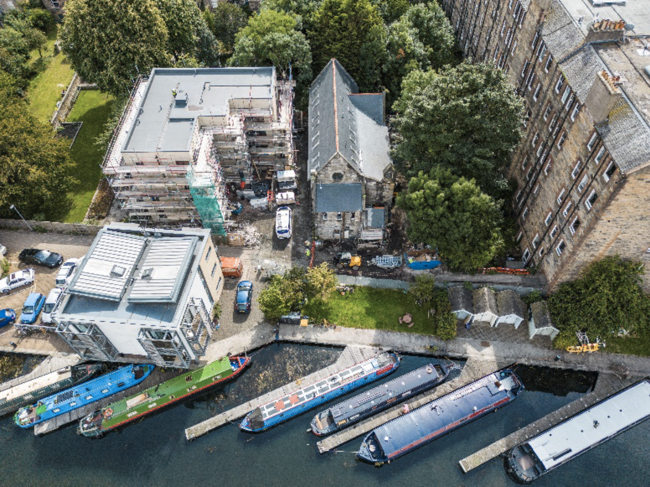
Glen Mhor Heat Project
Project Organisation:
Glen Mhor Ltd
Technology type(s):
Energy centre with 1MW water source heat pump
Location:
Glen Mhor Hotel, Inverness
Grant value:
£1,646,642 LCITP Grant
Completion date:
September 2024
Project description:
The project will install and commission a new energy centre which will house a 1 MW water source heat pump and use water from the River Ness to supply heat to the Glen Mhor Hotel in Inverness. It is hoped that additional connections to the heat network may be feasible in the future, such as connecting a planned Brewery and Visitor Centre development at the hotel as well as a nearby Church of Scotland and social housing development. However, none of these connections have been confirmed at this stage.
The project is expected to reduce emissions by approximately 730 tCO2e pa and commission in September 2024.
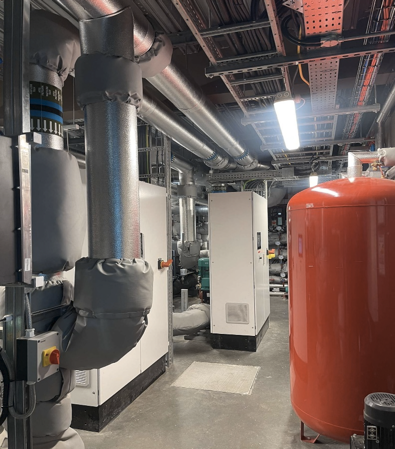
Millerhill Low Carbon District Heating Project
Project Organisation:
Midlothian Council
Technology type(s):
Construction of energy centre and heat network using heat from the Millerhill Energy from Waste Plant
Location:
Shawfair, Midlothian
Grant value:
£7,407,000 LCITP Grant
Completion date:
Autumn 2024
Project description:
The Project will install an exemplar low carbon district heating network at the new, emerging town of Shawfair which uses heat from the Millerhill Energy from Waste plant to deliver heat to the first plots of the Shawfair development. This initial network will be capable of expansion into the wider Midlothian, East Lothian and Edinburgh areas. The new joint venture ESCO between Midlothian Council, Vattenfall Heat UK and Midlothian Energy Limited has now been established and will lead on securing relevant heat off-take and supply agreements with the relevant parties and establishing an appropriate and a tiered tariff structure for end users.
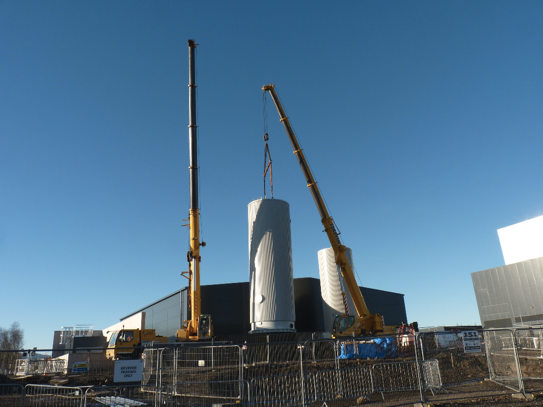
Granton Waterfront Western Villages
Project Organisation:
The City of Edinburgh Council
Technology type(s):
District heating system using air and water source heat pumps; solar PV, energy efficiency improvements and enhanced utilities with smart controls for metering and billing.
Location:
Granton Waterfront Development, North Edinburgh
Grant value:
£4,102,801 LCITP Grant
Completion date:
March 2025
Project description:
The project will deliver low carbon heat to 444 new-build properties in the Granton Waterfront Western Villages development through the use of nine external air source heat pumps, seven water to water heat pumps and a district heating pipe network to each apartment block. Each property will also be fitted with solar PV, enhanced utilities and fabric improvements. The predicted carbon savings from the project are approximately 317.8 tCO2e pa- when compared to a gas heating system.
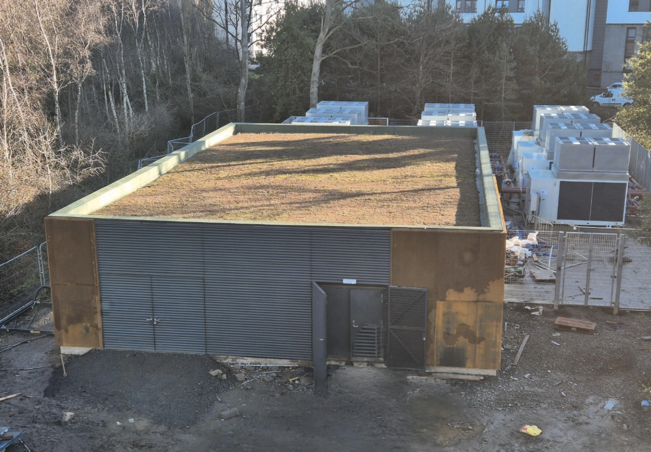
Clyde Heat
Project Organisation:
Peel NRE Developments Ltd
Technology type(s):
Water source heat pumps, high efficiency back up boilers and heat network infrastructure
Location:
Glasgow Harbour Development
Grant value:
£5,100,000 LCITP Grant
Completion date:
March 2026
Project description:
The project will install two 1.5MW water source heat pumps which will supply low carbon heat via a heat network. The heat network will serve the Glasgow Harbour Development, notably Yorkhill Quay and Therme spa. The project will commission 15.2MW of high efficiency boilers to meet peak loads. The development is planned to consist of a mix of commercial, residential and leisure end users who will be offered low carbon heat at a competitive rate.
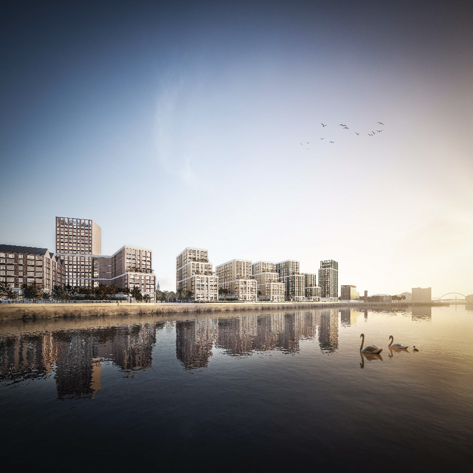
Social Housing Net Zero Heat Fund Capital Projects
Carron Estate ASHP Heat Network Project
Lead Organisation:
NG Homes
Project Stage:
Operational
Technology type(s):
Air Source Heat Pump; Solar PV
Location:
Springburn, Glasgow
Type of Support:
£3,695,187 SHNZHF grant
Completion date:
Commissioned July 2022
Project Description:
Installation of ASHP system to replace existing electric wet system in 314 homes in tower blocks.
This project saw NG Homes install ASHPs into seven tower blocks in the Springburn area of Glasgow, North of Glasgow City Centre. There are four 16-storey high–rise tower blocks and three 9-storey tower blocks situated on the Carron Estate. The 314 dwellings within the blocks previously had a mixture of 'old' inefficient electric storage and electric wet systems, which are expensive to run.
The project installed a Commercial-Grade Mitsubishi Ecodan CAHV Monobloc Air Source Heat Pump (ASHP) system which is connected to an underground district heat network that will serve all seven blocks. The heat network has pre-insulated pipework connected to insulated steel risers through each of the blocks. Insulated copper pipework forms the lateral pipework into each of the dwellings.
The system also benefits from the installation of solar PV onto three of seven blocks.
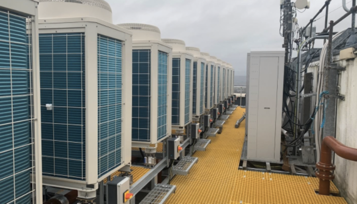
MacKenzie Gardens' Zero Emissions Heating Project
Lead Organisation:
Grampian Housing Association
Project Stage:
Operational
Technology Type(s):
Communal ASHP system with solar PV, battery storage and additional insulation measures
Location:
Turriff, Aberdeen
Type of Support:
£306,534 SHNZHF grant
Completion date:
Commissioned August 2022
Project Description:
Grampian Housing Association received grant funding to install a communal air source heat pump system to supply low carbon heat to 23 social housing homes in Aberdeen. Solar panel were installed so solar energy can be stored (in battery storage) and used to reduce energy costs for tenants, with any excess energy been fed back into the grid or provisioned for use in other Grampian Housing Association housing stock nearby.
The system was also designed with the potential for adding additional properties in the future, with the ASHP system designed to allow heat pump modules to be added.
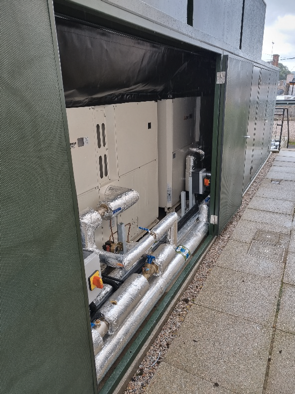
Arlington Street
Lead Organisation:
West of Scotland Housing Association
Project Stage:
Operational
Technology Type(s):
Communal ASHP system
Location:
Arlington Street, Glasgow
Type of Support:
£310,000 SHNZHF grant
Completion date:
Commissioned May 2024
Project Description:
This project included replacing current communal gas boilers with a communal ASHP system including thermal storage to maximise heat output and window replacement.
Arlington Street is a sheltered housing complex for elderly people consisting of twenty five flats spread across three floors, which was previously heated by a communal gas-fired boiler plant in the ground floor. A communal ASHP was deemed the most effective clean heating solution with individual Heat Interface Unit (HIU) for each flat and a backup electric boiler.
The HIU allows tenants to control and be billed for their heating and hot water use rather than being billed for the buildings heating demand, which could exceed their personal use. The communal ASHP has reduced the carbon footprint of the building and offers reduction in energy bills for tenants with the support of fabric improvements, including thermal glazed windows.
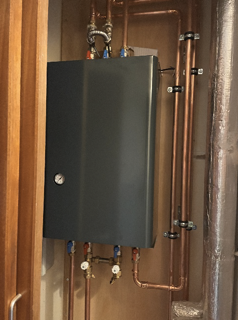
Heat Network Pre-capital Projects
Edinburgh BioQuarter
Lead organisation
City of Edinburgh Council
Project stage:
Pre-capital – Detailed feasibility study complete
Technology type(s):
Proposed new heat network and potential connection to existing heat network (primary heat source: energy from waste)
Location:
BioQuarter site, Little France Drive, Edinburgh
Type of support:
£47,000 HNSU grant and advisory support
Metric |
Value |
|---|---|
Annual Heat Demand (GWh) |
88.8 |
Total CAPEX (£m) |
50.3 |
IRR (%) |
8.1 |
Lifetime Carbon Savings (tCO2e) |
44,800 |
Project timeframe:
Feasibility study completed May 2023.
Project description:
The project explores the supply of heat to the Edinburgh BioQuarter site via a heat network. This is proposed to serve new buildings on Edinburgh's BioQuarter site masterplan, with connection to existing buildings on site in due course, including the NHS Royal Infirmary of Edinburgh and the Royal Hospital for Children and Young People, and the potential to serve social housing off-site. The feasibility study examines the potential for a new heat network and potential connection to Midlothian Energy Limited's Heat Network, the first phase of which is currently in construction.
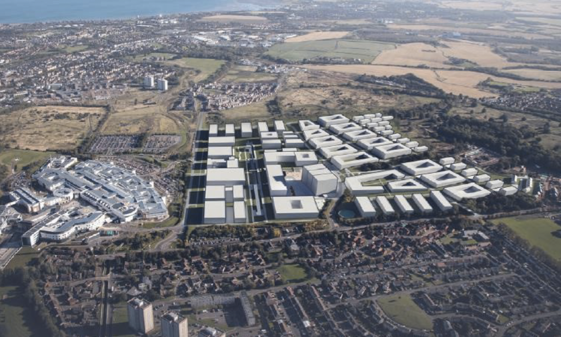
Dundee Caird Park
Lead organisation: Feasibility Summary
Metric |
Value |
|---|---|
Annual Heat Demand (GWh) |
10.4 |
Total CAPEX (£m) |
5.2 |
IRR (%) |
4% |
Lifetime Carbon Savings (tCO2e) |
57,719 |
Dundee City Council
Project stage:
Pre-capital – Detailed feasibility study complete
Technology type(s):
Existing heat network extension
Location:
Regional Performance Centre for Sport, Dundee
Type of support:
£35,000 HNSU grant
Project timeframe:
Feasibility report completed March 2023.
Project description:
The Caird Park project was originally supported by the Low Carbon Infrastructure Transition Programme. A pre-feasibility study to expand the network was published in January 2022 as part of an initiative to boost heat networks by the Scottish Cities Alliance. This study analysed opportunities to expand the existing network towards additional heating loads (a school, a college, a sports centre and a gymnastics centre). The project aimed to assess the viability of these additional connections.

Inverness West Bank
Lead organisation: Feasibility Summary
Metric |
Value |
|---|---|
Annual Heat Demand (GWh) |
13.1 |
Total CAPEX (£m) |
14.9 |
IRR (%) |
3.6% |
Lifetime Carbon Savings (tCO2e) |
109,188 |
The Highland Council
Project stage:
Pre-capital – Detailed feasibility study complete
Technology type(s):
Proposed new heat network
Location
Inverness
Type of support:
£27,500 HNSU grant
Project timeframe:
Feasibility report completed April 2023.
Project description:
The Highland Council are exploring the potential for a district heating network within Inverness. The main buildings identified for connection include Inverness Leisure Centre, Inverness Ice Centre, Highland Archive and Registration Centre, Inverness Botanic Gardens, Highland Council HQ and Eden Court.
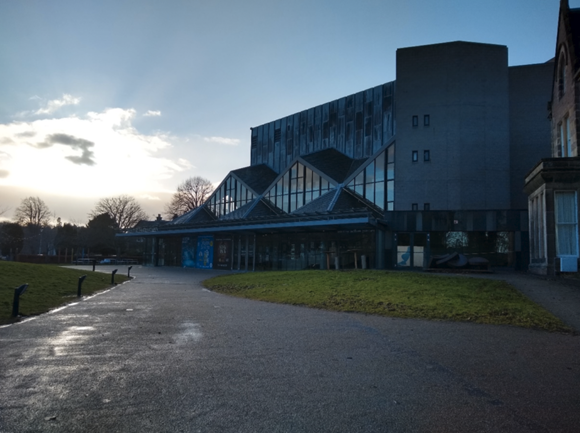
Inverness Castle
Lead organisation: Feasibility Summary
Metric |
Value |
|---|---|
Annual Heat Demand (GWh) |
1.07 |
Total CAPEX (£m) |
2.8 |
IRR (%) |
3.6% |
Lifetime Carbon Savings (tCO2e) |
6,480 |
The Highland Council
Project stage:
Pre-capital – Detailed feasibility study complete
Technology type(s):
Proposed new heat network
Location:
Inverness
Type of support:
£27,500 HNSU grant
Project timeframe:
Feasibility report completed April 2023.
Project description:
The Highland Council are developing a district heating network within the immediate area surrounding Inverness Castle which is a council administration centre. Potential heat sources include ground source heat pumps, river source heat pumps, sewer heat recovery, biomass and large-scale air source heat pumps.
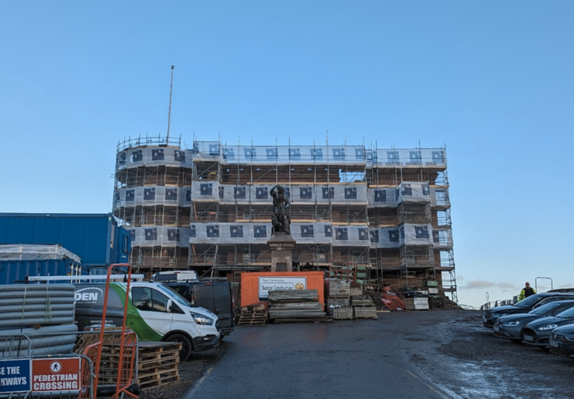
Perth City Centre Heat Network
Lead organisation: Feasibility Summary
Metric |
Value |
|---|---|
Annual Heat Demand (GWh) |
12.0 |
Total CAPEX (£m) |
10.9 |
IRR (%) |
6.5% |
Lifetime Carbon Savings (tCO2e) |
101,742 |
Perth and Kinross Council
Project stage:
Pre-capital – Detailed feasibility study complete
Technology type(s):
Proposed new heat network
Location:
Perth
Type of support:
£35,000 HNSU grant
Project timeframe:
Feasibility report completed in March 2023.
Project description:
Various non-domestic and domestic buildings including a concert hall, council offices, tower blocks and a hotel have been identified within Perth city centre that are potential connections for a heat network. A range of low carbon heat sources are recommended to be considered including river and ground source heat pumps.

Glasgow Polmadie
Lead organisation: Feasibility Summary
Glasgow City Council
Metric |
Value |
|---|---|
Annual Heat Demand (GWh) |
24.1 |
Total CAPEX (£m) |
22.8 |
IRR (%) |
3.6% |
Lifetime Carbon Savings (tCO2e) |
146,617 |
Project stage:
Pre-capital – Detailed feasibility study complete
Technology type(s):
Proposed new heat network
Location:
Glasgow
Type of support:
£45,000 HNSU grant for feasibility study
Project timeframe:
Feasibility report completed September 2023. Additional technoeconomic work completed in April 2024.
Project description:
Project secured grant funding to undertake a review of prior feasibility work to determine the potential for the Glasgow Recycling and Renewable Energy Centre (GRREC) to be used as a heat source for a district heat network serving a mix of domestic and non-domestic properties in the south side of Glasgow. Further technoeconomic work was carried out following completion of the feasibility study.
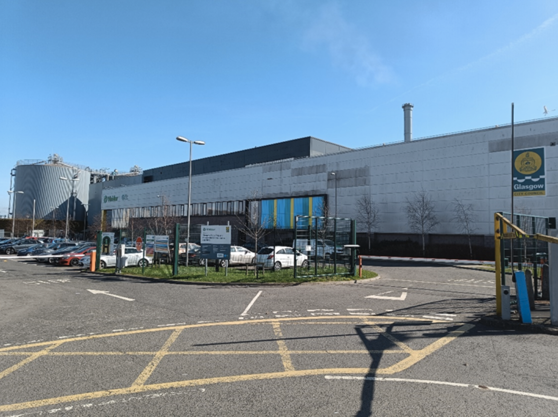
Queen's Quay Extension
Lead organisation:
West Dumbartonshire Council
Project stage:
OBC completed – commercialisation
Technology type(s):
Extension of existing heat network (heat source: water source heat pump)
Location:
Clydebank
Type of support:
Capacity building and OBC support
Project timeframe:
OBC completed in June 2023.
Project description:
The project proposes the extension of the Queens Quay heat network to connect to the Golden Jubilee Hospital.
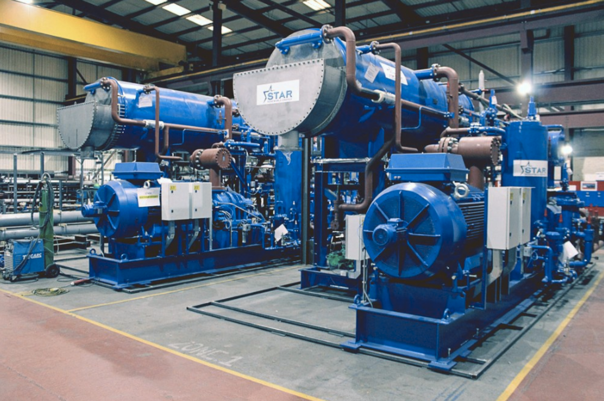
Granton Waterfront
Feasibility Summary
Metric |
Value |
|---|---|
Annual Heat Demand (GWh) |
30.6 |
Total CAPEX (£m) |
31.1 |
IRR (%) |
12% |
Lifetime Carbon Savings (tCO2e) |
21,572 |
Lead organisation:
City of Edinburgh Council
Project stage:
Pre-capital – Commercialisation
Technology type(s):
Proposed new heat network (proposed heat source: sewer source heat pump)
Location:
Granton, Edinburgh
Type of support:
£50,000 Scotland's Heat in Buildings Development Funding Invitation Grant
HNSU Advisory Support
Project timeframe:
Contract Notice published May 2023. Following a procurement process and approval by elected members, the Council appointed Vattenfall Heat UK Ltd as proposed concessionaire on a 2-stage process in December 2023. The initial pre-development stage is currently underway with a view to concluding with a final investment decision (on entering into a concession agreement) in the second half of 2025.
Project description:
The project proposes a new heat network to serve new buildings on the Granton development site. The site is of mixed use with approx 3000 homes and 9,000m2 non-domestic space, including a primary school, medical centre, business, retail and leisure. The projects aims to create the heat network with the potential to connect to nearby areas of heat demand to the south of the site, including existing schools and a leisure centre.
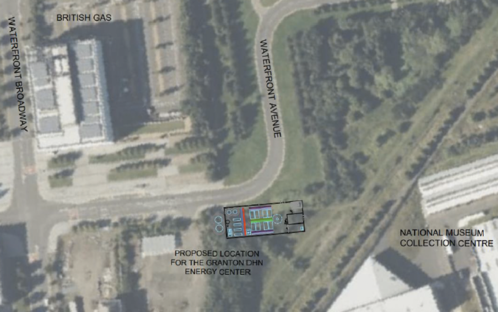
Edinburgh Airport Low Carbon Heat Network
Lead organisation:
Edinburgh Airport Ltd
Project stage:
Pre-capital - OBC complete
Technology type(s):
Proposed new heat network
Location:
Edinburgh Airport, Edinburgh
Type of support:
£42,500 Scotland's Heat in Buildings Development Funding Invitation Grant
Project timeframe:
OBC completed November 2023.
Project description:
The project involved the development of a technical and economic case for a district heat network which would supply heat to Edinburgh Airport, while acknowledging opportunities for future expansion to the Crosswinds and West Town developments (e.g. with regard to energy centre/pipe sizing).
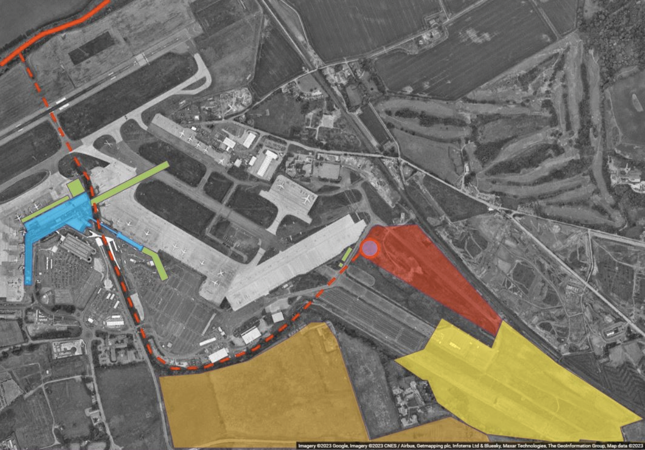
Hamilton Heat Network
Lead organisation: Feasibility Summary
Metric |
Value |
|---|---|
Annual Heat Demand (GWh) |
7.5 |
Total CAPEX (£m) |
10.2 |
IRR (%) |
17.8% |
Lifetime Carbon Savings (tCO2e) |
N/A |
South Lanarkshire Council
Project stage:
Pre-capital – Feasibility study complete
Technology type(s):
Proposed new heat network
Location:
Hamilton
Type of support:
£35,000 HNSU grant for feasibility study
Project timeframe:
Feasibility report completed January 2023.
Project description:
Proposed heat network centred around the council headquarters, and investigating the connection of several other non-domestic public sector properties, tower blocks and proposed new-build housing in the area. Ground source heat pumps are the recommended primary heat supply technology.
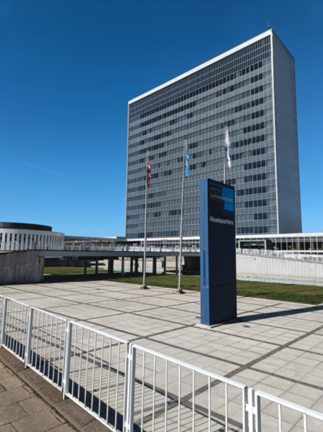
Blindwells Heat Network
Lead organisation: Feasibility Summary
Metric |
Value |
|---|---|
Annual Heat Demand (GWh) |
10.9 |
Total CAPEX (£m) |
13.4 |
IRR (%) |
3.9% |
Lifetime Carbon Savings (tCO2e) |
1,118 |
Hargreaves Land
Project stage:
Pre-capital – Detailed feasibility study complete
Technology type(s):
Proposed new heat network
Location:
Blindwells, East Lothian
Type of support:
£30,000 HNSU grant
Project timeframe:
Feasibility report completed February 2023. Project moving forward to capital delivery.
Project description:
The project involves the redevelopment of a former quarry and mine for new-build residential, public and commercial properties. A suggested approach is recovering heat from minewater, which will be fed through an ambient loop to households, each of which will have individual heat pumps.
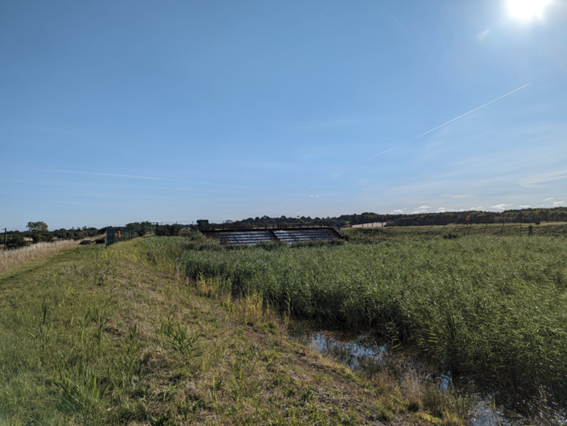
Eastwood Park
Lead organisation: Feasibility Summary
Metric |
Value |
|---|---|
Annual Heat Demand (GWh) |
9.8 |
Total CAPEX (£m) |
14.7 |
IRR (%) |
5.6% |
Lifetime Carbon Savings (tCO2e) |
62,258 |
East Renfrewshire Council
Project stage:
Pre-capital – Detailed feasibility study complete
Technology type(s):
Proposed new heat network
Location:
Eastwood Park, Glasgow
Type of support:
£38,500 HNSU grant
Project timeframe:
Feasibility study completed January 2024.
Project description:
This project proposes a new heat network with sewer water heat recovery as a potential source. The proposed heat network would supply public sector buildings including Eastwood Park Campus, schools and a leisure centre.
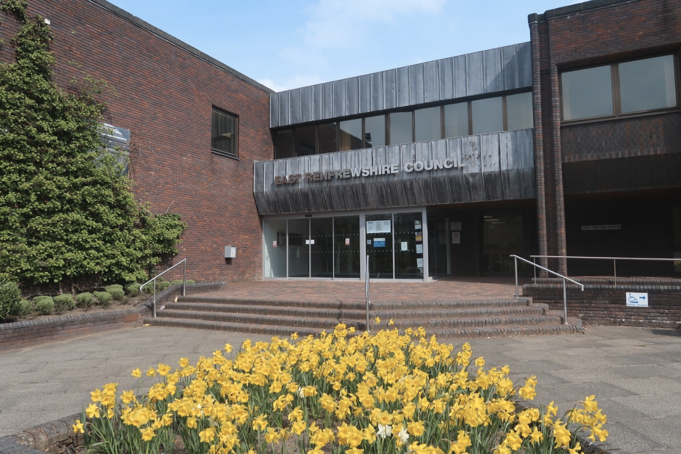
St Andrews University Heat Network Extension
Lead organisation: Feasibility Summary
Metric |
Value |
|---|---|
Annual Heat Demand (GWh) |
2.9 |
Total CAPEX (£m) |
8.7 |
IRR (%) |
17% |
Lifetime Carbon Savings (tCO2e) |
75,488 |
University of St Andrews
Project stage:
Pre-capital – Detailed feasibility study
Technology type(s):
Extension of existing heat network (heat source: biomass)
Location:
St Andrews, Fife
Type of support:
£50,000 HNSU grant
Project timeframe:
Feasibility study completed in March 2024.
Project description:
This project proposes the extension of an existing biomass heat network in and around St Andrews. Since its commissioning in 2017 the existing heat network, sourced by a 6.5MW biomass boiler has provided heating and hot water to 50 University campus buildings via 27 km of pipe, accumulating savings of 20,000 tCO2e. The feasibility study will explore different options to identify a preferred extension scenario, which could include public sector buildings, schools and hospitality venues.
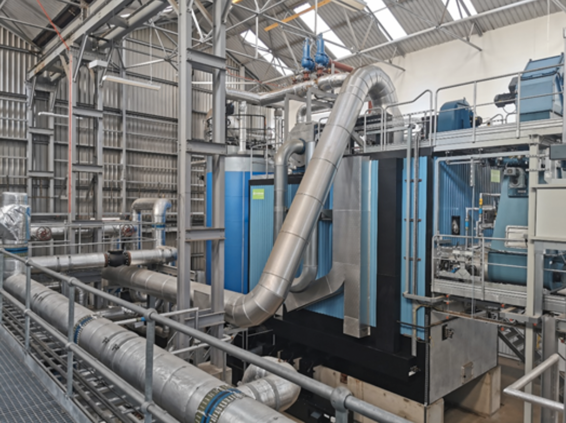
Dundee Baldovie
Lead organisation:
MVV Environment Baldovie Ltd
Project stage:
Pre-capital – Detailed feasibility study complete
Technology type(s):
Proposed new heat network
Location:
Whitefield & Douglas area, Dundee
Type of support:
£50,000 HNSU grant
Project timeframe:
Feasibility study completed February 2024.
Project description:
This project proposes the creation of a heat network for the Whitefield and Douglas area with heat supply from the Baldovie Energy from Waste facility. The study will assess potential anchor loads in the vicinity of the Energy from Waste facility, and the potential to extend towards the city centre.
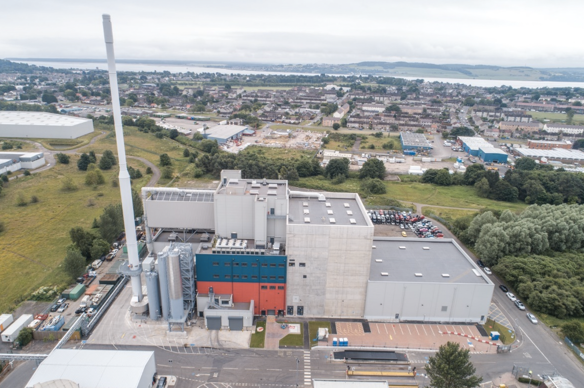
Paisley Central
Feasibility Summary (Paisley
Metric |
Value |
|---|---|
Annual Heat Demand (GWh) |
49.9 |
Total CAPEX (£m) |
72.4 |
IRR (%) |
8% |
Lifetime Carbon Savings (tCO2e) |
Considerable |
Lead organisation: West only)
Renfrewshire Council
Project stage:
Pre-capital – Outline Business Case
Technology type(s):
Proposed new heat network
Location:
Paisley Central
Type of support:
Up to £75,000 HNSU grant
Project Timeframe:
Feasibility reports for Paisley West and Paisley East completed May 2024. Renfrewshire Council have combined both areas to be taken forward as 'Paisley Central' for the OBC.
Project description:
The feasibility studies identified an opportunity for a 4th Generation heat network in Paisley Central, making use of waste heat recovery using a Wastewater Source Heat Pump as the primary technology. Potential connections include the University of West of Scotland, Royal Alexandra Hospital, The Piazza Shopping Centre, The Lagoon Sports Centre, Paisley Town Hall, Paisley Museum and Art Gallery and Renfrewshire House, along with a mix of domestic and non-domestic properties including social housing.
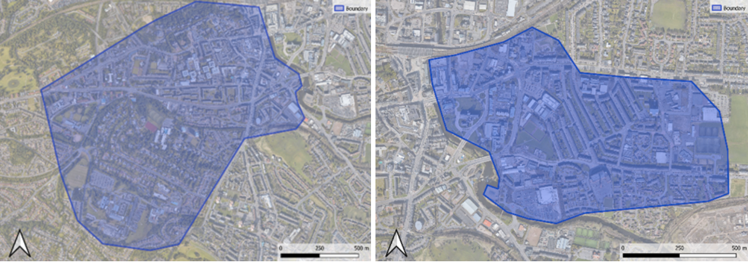
Paisley North – AMIDS Extension
Lead organisation: Feasibility Summary
Metric |
Value |
|---|---|
Annual Heat Demand (GWh) |
11.2 |
Total CAPEX (£m) |
9.2 |
IRR (%) |
10% |
Lifetime Carbon Savings (tCO2e) |
86,191 |
Renfrewshire Council
Project stage:
Pre-capital – Outline Business Case
Technology type(s):
Existing heat network extension
Location:
Paisley North
Type of support:
Up to £60,000 HNSU grant
Project timeframe:
Feasibility report completed April 2024. OBC underway.
Project description:
Renfrewshire Council are exploring extending the existing Advanced Manufacturing Innovation District Scotland (AMIDS) heat network in Paisley South with the proposed area being Paisley North. Potential connections include Glasgow International Airport, hotels south of the airport, education buildings and future industrial buildings at the AMIDS development. The existing AMIDS heat source is a wastewater treatment works. Alternative (or additional) heat sources include river, ground and air source heat pumps. The project is now progressing to OBC stage.
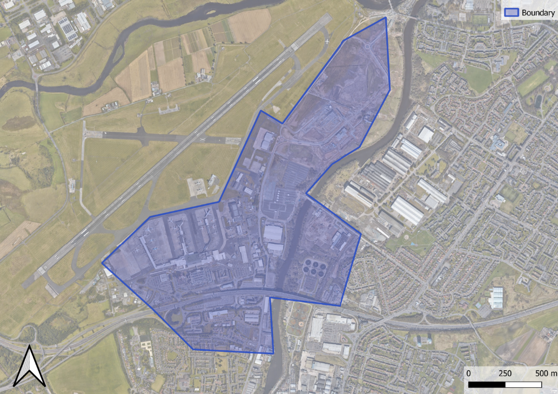
Callendar Park
Feasibility Summary
Metric |
Value |
|---|---|
Annual Heat Demand (GWh) |
6.2 |
Total CAPEX (£m) |
13.3 |
IRR (%) |
1.7% |
Lifetime Carbon Savings (tCO2e) |
120,110 |
Lead organisation:
Falkirk Council
Project stage:
Pre-capital – Detailed feasibility study
Technology type(s):
Existing heat network extension
Location:
Callendar Park, Falkirk
Type of support:
£40,000 HNSU grant
Project timeframe:
Feasibility report completed April 2024.
Project description:
Falkirk Council investigated how to upgrade and extend an existing gas CHP heat network in the Callendar Park area. The CHP system currently powers 9 of the 11 tower blocks in the area and requires upgrading in the next 5 years. The proposed extension would power the existing 9 tower blocks, in addition to Callendar Business Park and two local schools. There is also potential to extend to the town centre, towards the new Falkirk Town Hall.
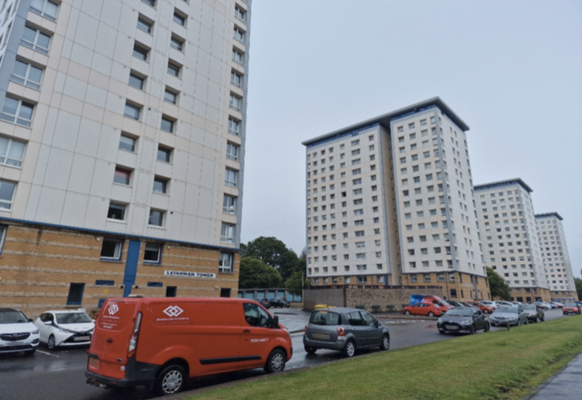
Tweedbank
Lead organization:
Scottish Borders Council
Project stage:
Pre-capital – Detailed feasibility study
Technology type(s):
Proposed new heat network
Location:
Tweedbank
Type of support:
£50,000 HNSU grant
Project timeframe:
Feasibility report completed March 2024.
Project description:
Scottish Borders Council investigated a potential new heat networkthat serves a mixed-use development. This development includes 300-400 properties, a community centre, care village and business space. Tweedbank is a key anchor load and there is potential to expand west to Galashiels and east to Melrose.
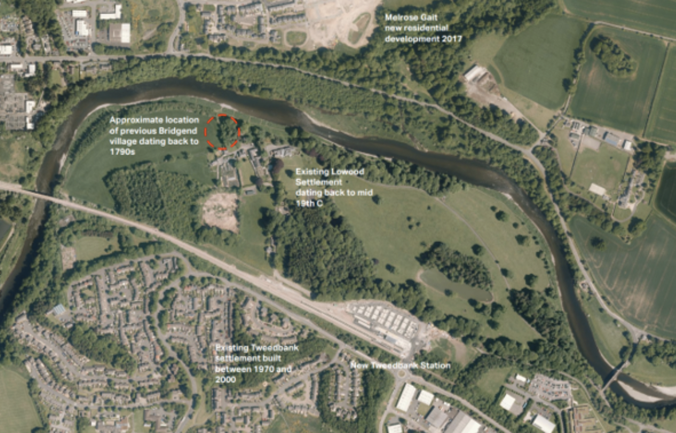
The Crichton Trust
Feasibility Summary
Metric |
Value |
|---|---|
Annual Heat Demand (GWh) |
25.0 |
Total CAPEX (£m) |
24.3 |
IRR (%) |
8.3% |
Lifetime Carbon Savings (tCO2e) |
231,073 |
Lead organisation:
The Crichton Trust
Project stage:
Pre-capital – Detailed feasibility study
Technology type(s):
Proposed new heat network
Location:
Crichton Estate
Type of support:
£45,000 HNSU grant
Project timeframe:
Feasibility report completed April 2024.
Project description:
The Crichton Trust investigated a potential new heat network that serves the mixed-use buildings on Crichton Estate, Dumfries and Galloway College, Scottish Rural Agricultural College, Brownhill Primary School, three NHS buildings and domestic properties. Potential heat sources include ground source heat pump, river source heat pump and wastewater treatment plant.
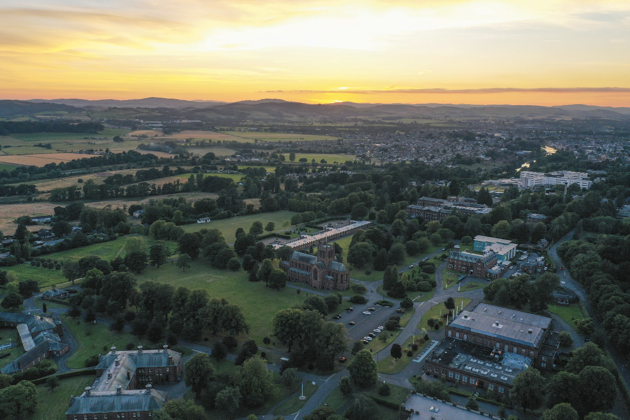
University of Stirling
Feasibility Summary
Metric |
Value |
|---|---|
Annual Heat Demand (GWh) |
21.82 |
Total CAPEX (£m) |
17.8 |
IRR (%) |
N/A |
Lifetime Carbon Savings (tCO2e) |
151,611 |
Lead organisation:
University of Stirling
Project stage:
Pre-capital – Detailed feasibility study
Technology type(s):
Decarbonising and expanding existing combined heat and power heat network
Location:
Stirling
Type of support:
£50,000 HNSU grant
Project timeframe:
Feasibility report completed November 2024.
Project description:
The University of Stirling looked into decarbonising and expanding their existing heat network on the university campus. The optimal scenario would involve replacing existing gas boilers with electric boilers when they come to end of life, installing air-source heat pumps, and expanding the heat network to other university-owned buildings within the campus bounds.
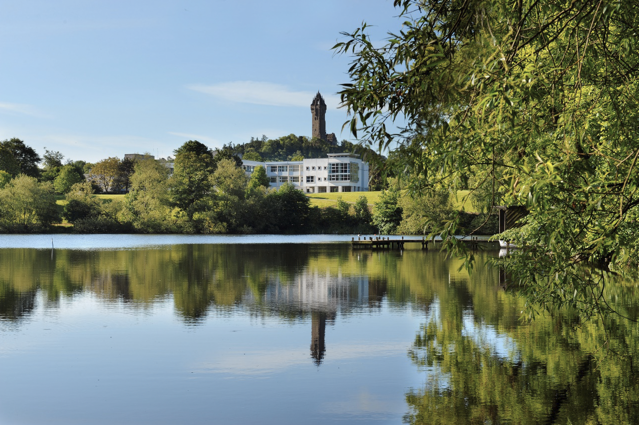
Greenock River Clyde Homes
Lead organisation:
River Clyde Homes
Project stage:
Pre-capital – Detailed feasibility study
Technology type(s):
Expansion of existing heat network
Location:
Greenock
Project timeframe:
Feasibility report due December 2024.
Type of support:
Up to £50,000 HNSU grant
Project description:
River Clyde Homes are looking to expand their current heat network at Broomhill. The existing energy centre serves 517 homes and currently relies on biomass. There are an additional two thousand of the Association's housing stock located within a 2km radius that are not currently connected to the network. The association would also consider expanding the network to include buildings and property owners not within the RCH Group including Inverclyde Council, NHS and other social landlords within the Central Greenock area who own and maintain schools, leisure centres, health care centres and hospitals.
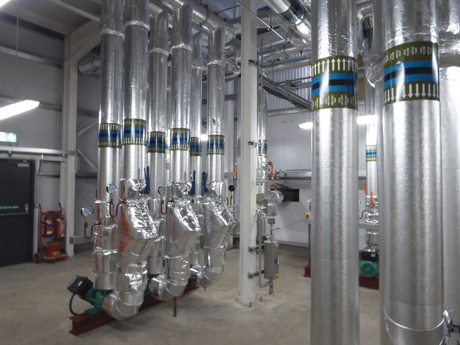
Elgin Town Centre
Feasibility Summary
Metric |
Value |
|---|---|
Annual Heat Demand (GWh) |
20.0 |
Total CAPEX (£m) |
35.9 |
IRR (%) |
Between 6% - 12% |
Lifetime Carbon Savings (tCO2e) |
18,000 |
Lead organisation:
Moray Council
Project stage:
Pre-capital – Detailed feasibility study
Technology type(s):
Proposed new heat network
Location:
Elgin City
Project timeframe:
Feasibility report completed October 2024.
Type of support:
£49,000 HNSU grant
Project description:
Moray Council are looking at combining two potential heat network areas as identified in their LHEES. Those areas include the town centre of Elgin and the adjacent area around the Moray Leisure Centre and Elgin Academy. The centre of Elgin includes buildings such as Elgin Town Hall, Elgin Library, Moray Council HQ and Moray Growth Deal projects in South Street.
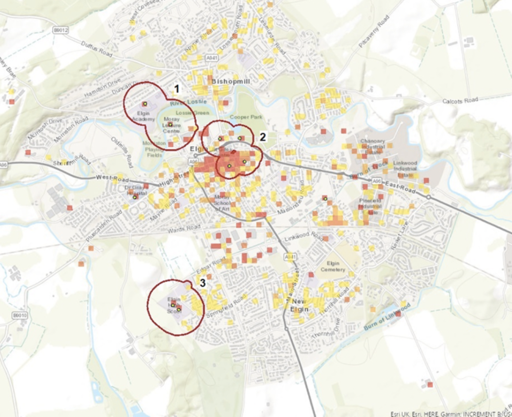
Abertay University
Lead organisation:
Abertay University
Project stage:
Pre-capital
Technology type(s):
Proposed new heat network
Location:
Abertay University, Dundee
Project timeframe:
On-going
Type of support:
HNSU critical-friend support
Project description:
The project focuses on the energy centre which is located within an existing building on the Abertay campus. Abertay University have drafted an Outline Business Case for the project.

Old Town Edinburgh
Lead organisation:
City of Edinburgh Council
Project stage:
Pre-capital – Detailed feasibility study
Technology type(s):
Proposed new heat network
Location:
Edinburgh
Project timeframe:
Feasiblity report due February 2025.
Type of support:
Up to £50,000 HNSU grant
Project description:
The detailed feasibility study is looking to determine whether a heat network located in the prospective heat network zone of the Old Town and Southside in Edinburgh is likely to be viable. Potential heat sources include two major sewers as well as the Duddingston Loch and the park surrounding Arthur's Seat. Potential connections include council owned buildings such as Waverly Court, the City Chambers, Royal Mile Primary School, the Central Library, St Tomas of Aquin's R.C. High School, Boroughmuir High School, and the Royal Commonwealth Pool.
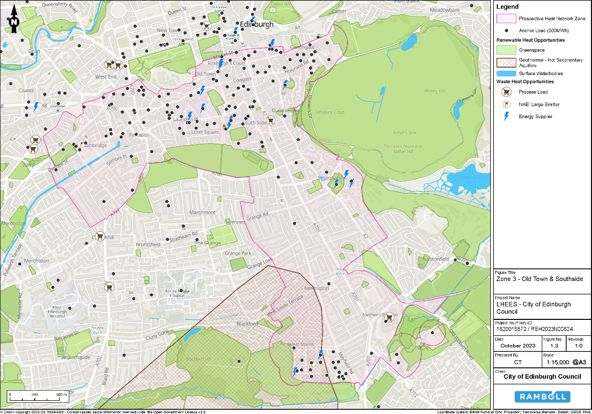
Dumfries Town Centre
Lead organisation:
Dumfries and Galloway Council
Project stage:
Pre-capital – Detailed feasibility study
Technology type(s):
Proposed new heat network
Location:
Dumfries
Project timeframe:
Feasiblity report due March 2025.
Type of support:
Up to £50,000 HNSU grant
Project description:
The detailed feasibility study is exploring a heat network opportunity aiming to provide clean heating to Dumfries town centre, in particular to decarbonise the Council assets. The proposed heat network could support the development of a wider spine of networks incorporating the proposed heat networks at Crichton Quarter and Midsteeple Quarter, as well as other buildings within close proximity.
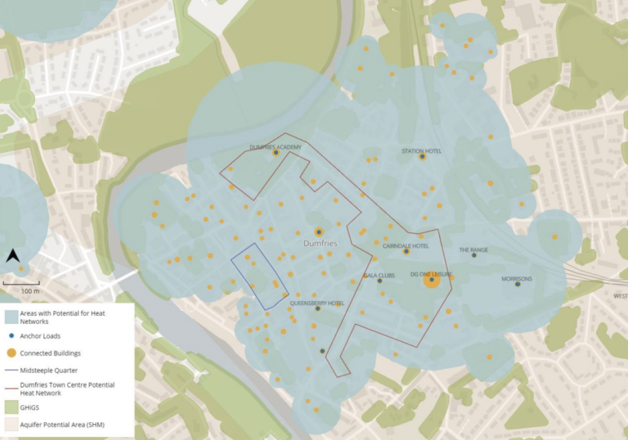
Contact
Email: HeatNetworkSupport@gov.scot
There is a problem
Thanks for your feedback